Abstract
Young, fully expanded leaves from 7-month-old P-deficient citrus rootstock seedlings had levels of nonprotein arginine that were 10- to 50-fold greater than those from P-sufficient control plants. Arginine content of the protein fraction increased 2- to 4-fold in P-deficient leaves. Total arginine content, which averaged 72 ± 6 micromoles per gram dry weight of P-sufficient leaf tissue (mean ± se, n = the four rootstocks) was 207, 308, 241, and 178 micromoles in P-deficient leaves from Citrus limon cv rough lemon, Poncirus trifoliata × C. sinensis cv Carrizo citrange and cv Troyer citrange, and P. trifoliata cv Australian trifoliate orange, respectively. For each rootstock, the accumulation of arginine paralleled an increase in the activity of the pathway for the de novo biosynthesis of arginine. The ratio of the nanomoles NaH14CO3 incorporated into the combined pool of arginine plus urea per gram fresh weight intact leaf tissue during a 3-hour labeling period for P-deficient to P-sufficient plants was 91:34, 49:11, 35:11, and 52:41, respectively. When P-deficient plants were supplied with P, incorporation of NaH14CO3 into arginine plus urea was reduced to the level observed for the P-sufficient control plants of the same age and arginine ceased to accumulate. Arginase and arginine decarboxylase activity were either unaffected or slightly increased during phosphorus deficiency. Taken together, these results provide strong evidence that arginine accumulation during phosphorus deficiency is due to increased activity of the de novo arginine biosynthetic pathway.
Full text
PDF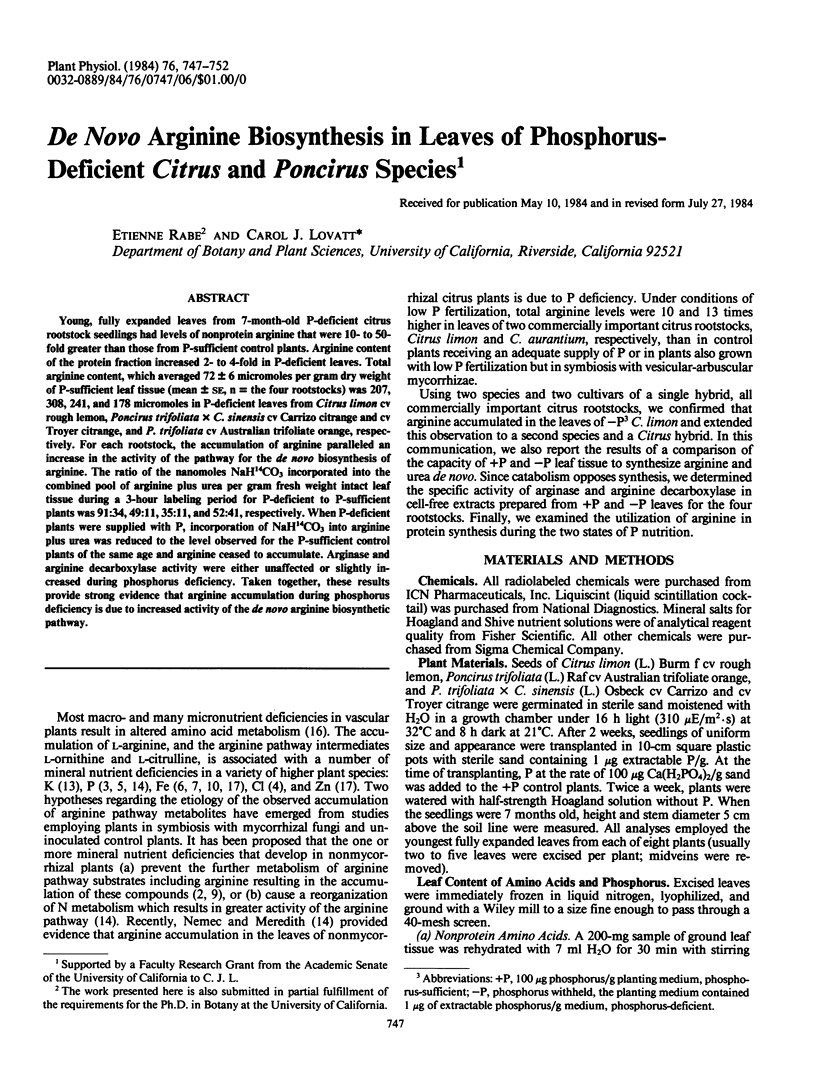
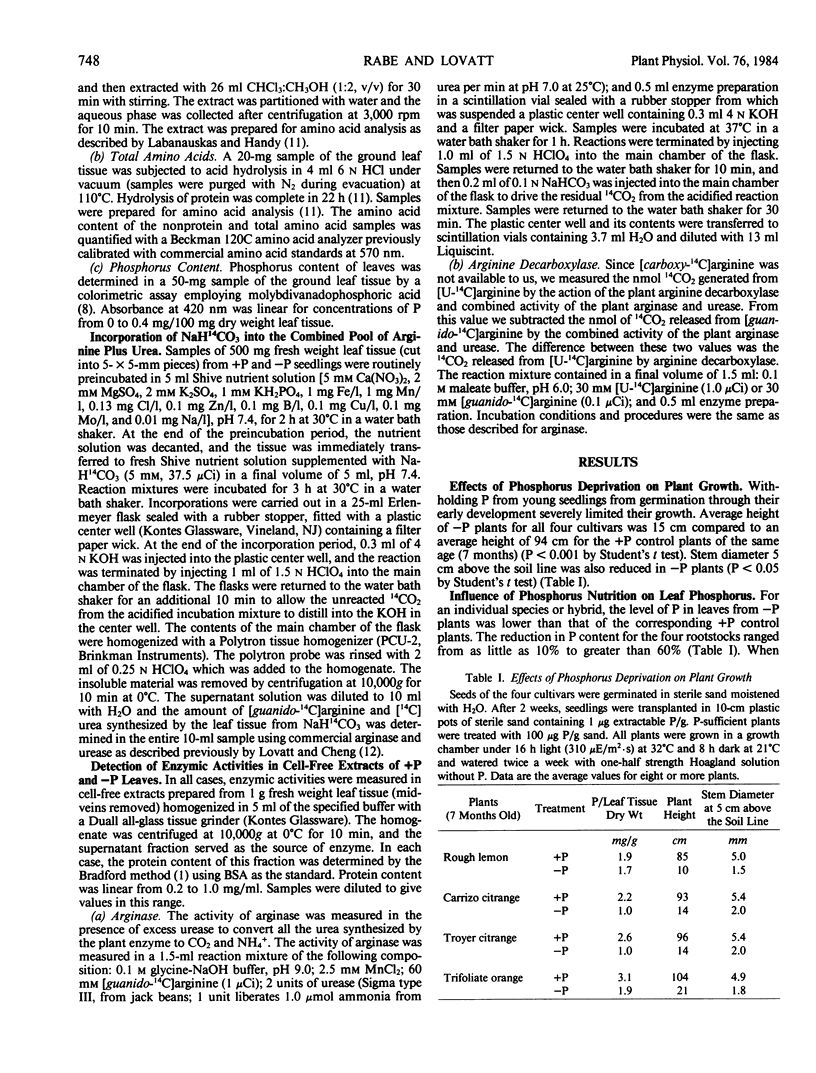
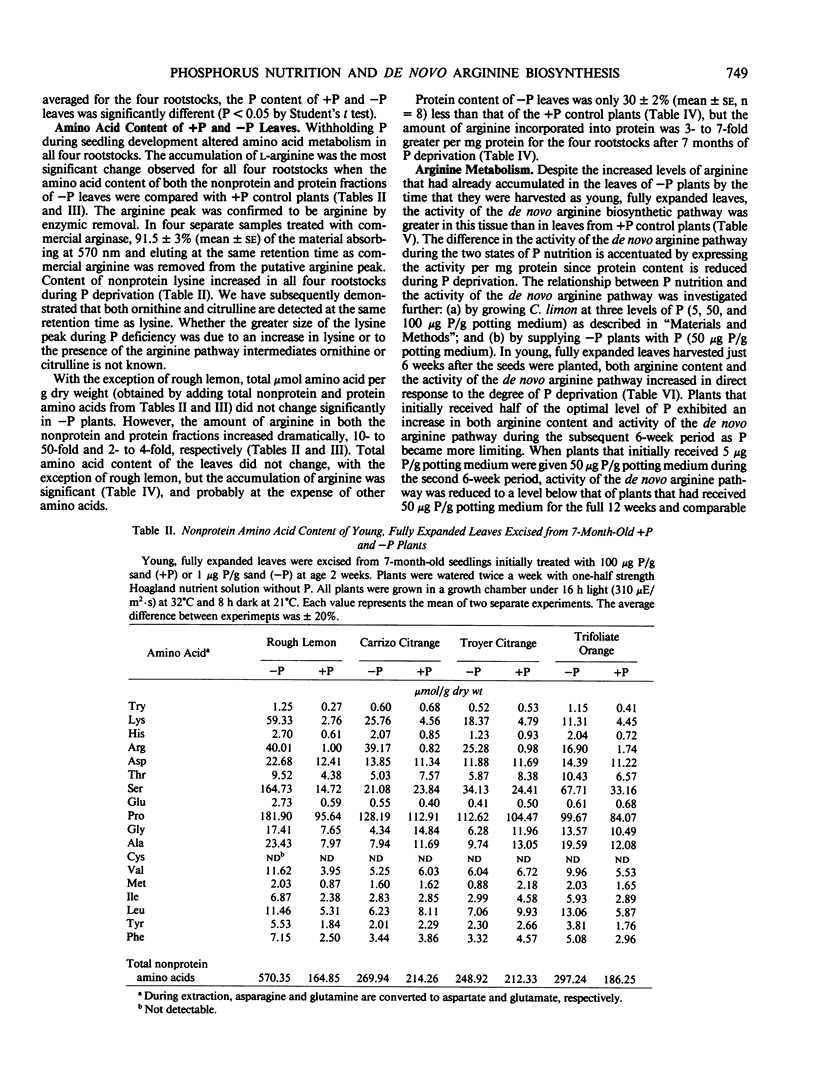
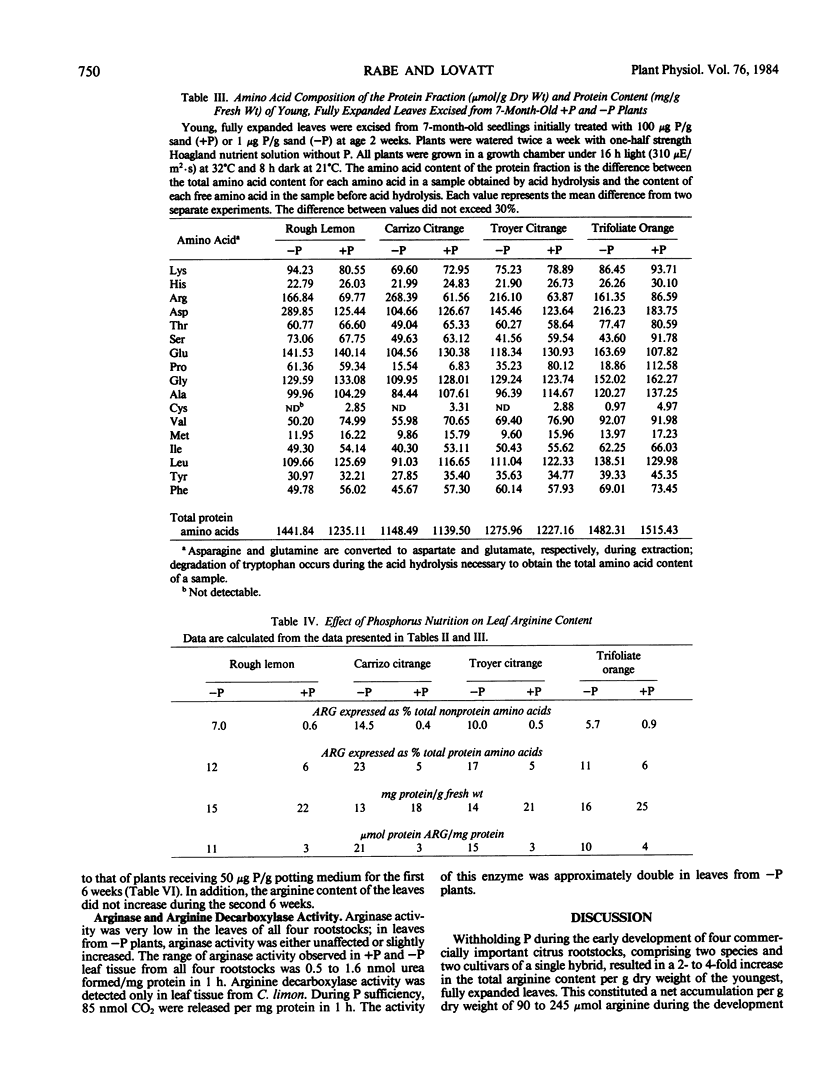
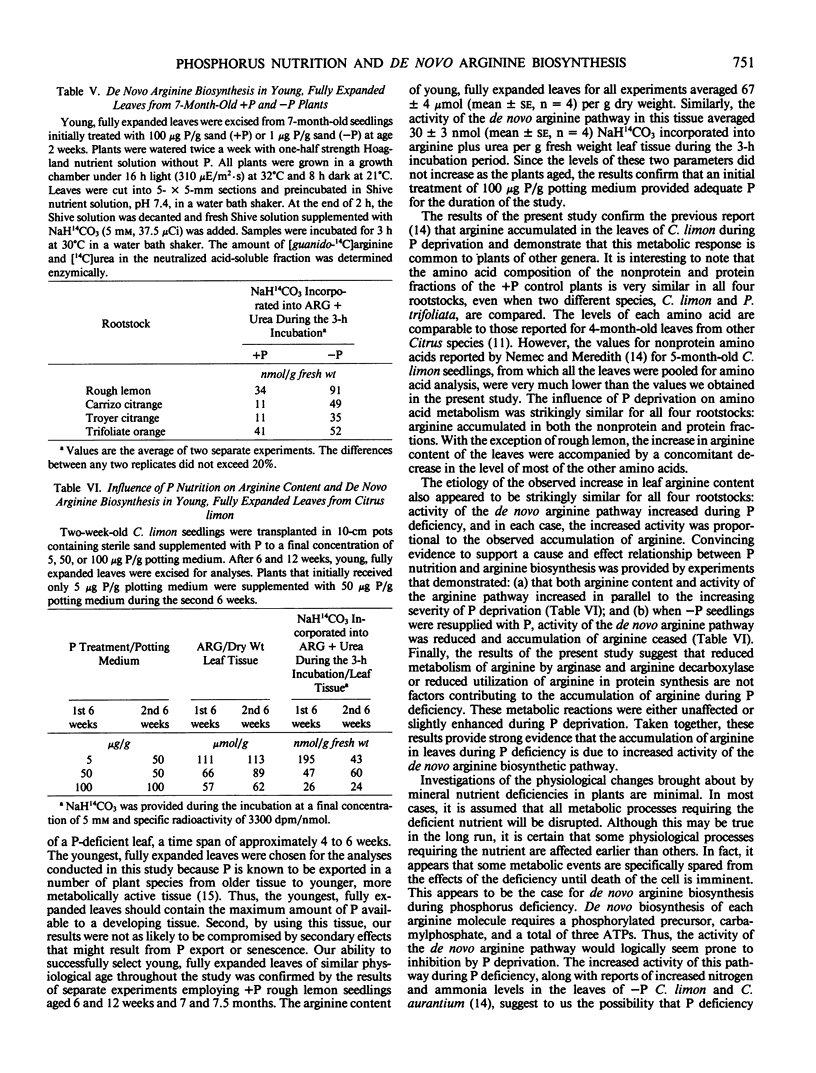
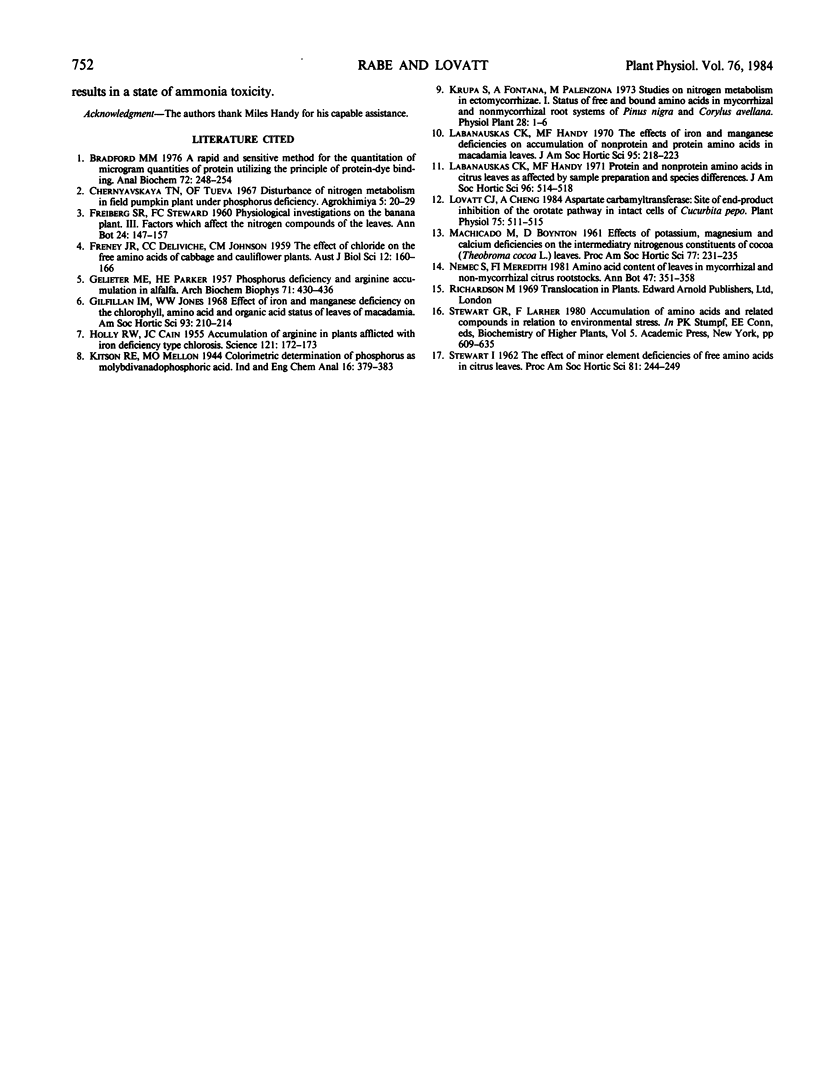
Selected References
These references are in PubMed. This may not be the complete list of references from this article.
- Bradford M. M. A rapid and sensitive method for the quantitation of microgram quantities of protein utilizing the principle of protein-dye binding. Anal Biochem. 1976 May 7;72:248–254. doi: 10.1006/abio.1976.9999. [DOI] [PubMed] [Google Scholar]
- GLEITER M. E., PARKER H. E. The effect of phosphorus deficiency on the free amino acids of alfalfa. Arch Biochem Biophys. 1957 Oct;71(2):430–436. doi: 10.1016/0003-9861(57)90054-1. [DOI] [PubMed] [Google Scholar]
- HOLLEY R. W., CAIN J. C. Accumulation of arginine in plants afflicted with iron-deficiency type chlorosis. Science. 1955 Feb 4;121(3136):172–173. doi: 10.1126/science.121.3136.172. [DOI] [PubMed] [Google Scholar]
- Lovatt C. J., Cheng A. H. Aspartate Carbamyltransferase : Site of End-Product Inhibition of the Orotate Pathway in Intact Cells of Cucurbita pepo. Plant Physiol. 1984 Jul;75(3):511–515. doi: 10.1104/pp.75.3.511. [DOI] [PMC free article] [PubMed] [Google Scholar]


